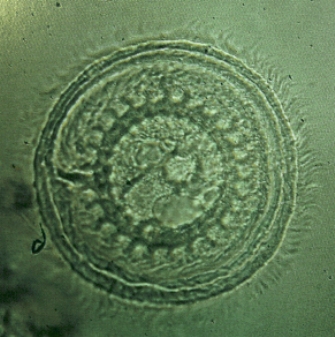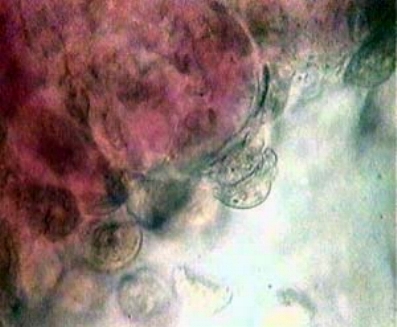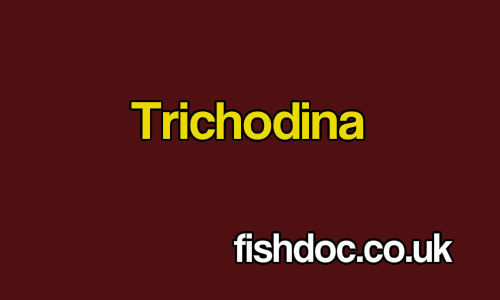Extremely irritating
It is not uncommon to find small populations of the parasite Trichodina on fish. At low levels they don’t pose a threat to fish health. Unlike many parasites it doesn’t actually feed on fish; these parasites only use the fish host as a home and means of transport! However, in large numbers they are extremely irritating and it is likely that some tissue damage will result from the sucking disc that trichodinids use for attachment. Healthy fish can control the numbers of parasites. Severe trichodinid infestations are usually associated with overcrowding and poor water quality. Under such conditions these parasites can rapidly multiply.
Trichodina |
|
 This shows the outer rim of cilia and the central sucking disc with its hook-like denticles This shows the outer rim of cilia and the central sucking disc with its hook-like denticles |
|
 Trichodinids in a wet mount (mucus) at low magnification Trichodinids in a wet mount (mucus) at low magnification |
|
 Trichodina on the edge of a gill filament. Note the density, with some sitting on top of others. Trichodina on the edge of a gill filament. Note the density, with some sitting on top of others. |
|
photos: Frank Prince-Iles |
|
Identification
They are easy to recognize in a wet mount. They always remind me of flying saucers, hovering and skimming over the surface of the gill or skin. They are top-hat shaped when viewed from the side. When viewed from the top it is possible to see an outer ring of cilia and the concentric rings and hook-like denticles of the sucking disc. (See the top photo) Gill trichodinids are smaller than their skin-dwelling cousins, usually less than 30 mm. They also tend to move faster than skin trichodinids. Those found on the skin are usually > 50 mm.
The fish react to Trichodina in much the same way as any other parasite by rubbing and flashing. There may be focal areas of reddening. At a later stage the fish will be lethargic, they may isolate themselves, stop feeding and lay on the bottom with clamped fins.
While they are not as immediately life-threatening as most parasites, heavy infestations do cause considerable stress to the fish and it is not uncommon for other ectoparasites and bacteria to take advantage leading to secondary infections.
Treatments
My own experience is that this parasite can be tricky to treat. Sometimes it responds to proprietary parasite treatments and other times they have little or no effect. The same applies to malachite green and formalin. The most effective treatment against Trichodina seems to be potassium permanganate which seems to work virtually every time. Usually only one treatment is needed to.
Salt baths can be useful if only dealing with just one or two fish.

